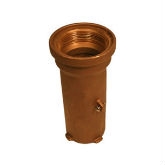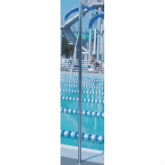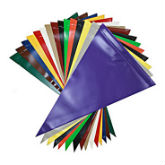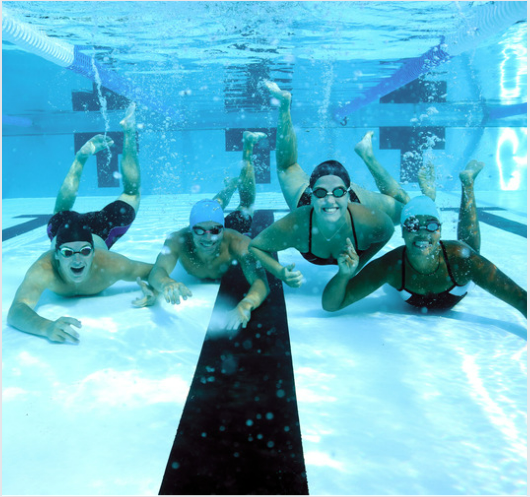Swimming Pool Backstroke Flags

Swim Tips, Swim Technique, Gear Advice, Swim Safety
|
September 8, 2013
Backstroke Flags Explained
Swim Flags are essential pool equipment, recommended for aquatics programs hosting swim practices, lap swimming, or swim meets. They are useful for swimmers, coaches, and aquatics directors. Read on to learn what you need to know.How Swimmers Use Swimming Flags
Generally speaking, pool flags alert swimmers to their whereabouts in the pool. Additionally, flags have specific uses important to athlete practice and competition:Perfecting Backstroke Turns & Finishes
- Stroke Count Analysis: Perfecting flip turns and finishes requires swimmers to determine their stroke count, calculating how many strokes it takes to swim from swim flags to pool wall. For an accurate count, I recommend starting from the 15 meter mark, reaching your stroke cadence, and then beginning your count from the flagline.
- Perfecting Backstroke Turns & Finishes: Once a swimmer determines their flag to wall stroke count, they can work to perfect finishes and turns. When teaching turns, I recommend that swimmers with a 4 stroke finish count use a 3 stroke turn count. Starting at the flags, count 1-2-3, roll, and pull yourself into a flip turn. That last stroke is crucial to maintaining momentum, so don't let if fall lifelessly to your side. Grab water and push it down to your toes, propelling you into your turn.
Lane Number Orientation
Many programs choose to add lane numbers to flags, streamlining competition by allowing swimmers to double check lane assignments from the starting blocks.What Aquatic Centers Should Know About Swimming Flags
Flag Location and Anchoring
[caption id="attachment_849" align="alignleft" width="165"] Pool Flag Stanchion[/caption]
Backstroke flags are usually strung between stanchions, sturdy metal posts anchored to the pool deck using slip anchors. Whether swimmers are using short course yard pools or long course meter pools, they rely on colorful swim flags to determine their distance from the lane end wall. Flag lines are less commonly anchored directly to facility walls, usually in cases where tying to stanchions isn't possible.
Flags and pool stanchions are stationed 5 meters (in the case of long and short course meters courses) or 5 yards (in the case of short course yards courses) away from end of course, to create a standard for swimmers using stroke counts to optimize turns, perfect race finishes, and avoid ramming into the pool wall!
Sliding stanchion collars can be added to quickly and easily change the height of pool flags.
Pool Flag Stanchion[/caption]
Backstroke flags are usually strung between stanchions, sturdy metal posts anchored to the pool deck using slip anchors. Whether swimmers are using short course yard pools or long course meter pools, they rely on colorful swim flags to determine their distance from the lane end wall. Flag lines are less commonly anchored directly to facility walls, usually in cases where tying to stanchions isn't possible.
Flags and pool stanchions are stationed 5 meters (in the case of long and short course meters courses) or 5 yards (in the case of short course yards courses) away from end of course, to create a standard for swimmers using stroke counts to optimize turns, perfect race finishes, and avoid ramming into the pool wall!
Sliding stanchion collars can be added to quickly and easily change the height of pool flags.
Pool Flag Options
[caption id="attachment_850" align="alignleft" width="165"] Vinyl Swimming Pool Flags[/caption]
Backstroke flags are offered in a choice of materials. Flag material selection is based on the needs of the program, and whether your pool is indoor or outdoor.
Vinyl Swimming Pool Flags[/caption]
Backstroke flags are offered in a choice of materials. Flag material selection is based on the needs of the program, and whether your pool is indoor or outdoor.







Leave a Comment
Your email address will not be published. Required fields are marked *